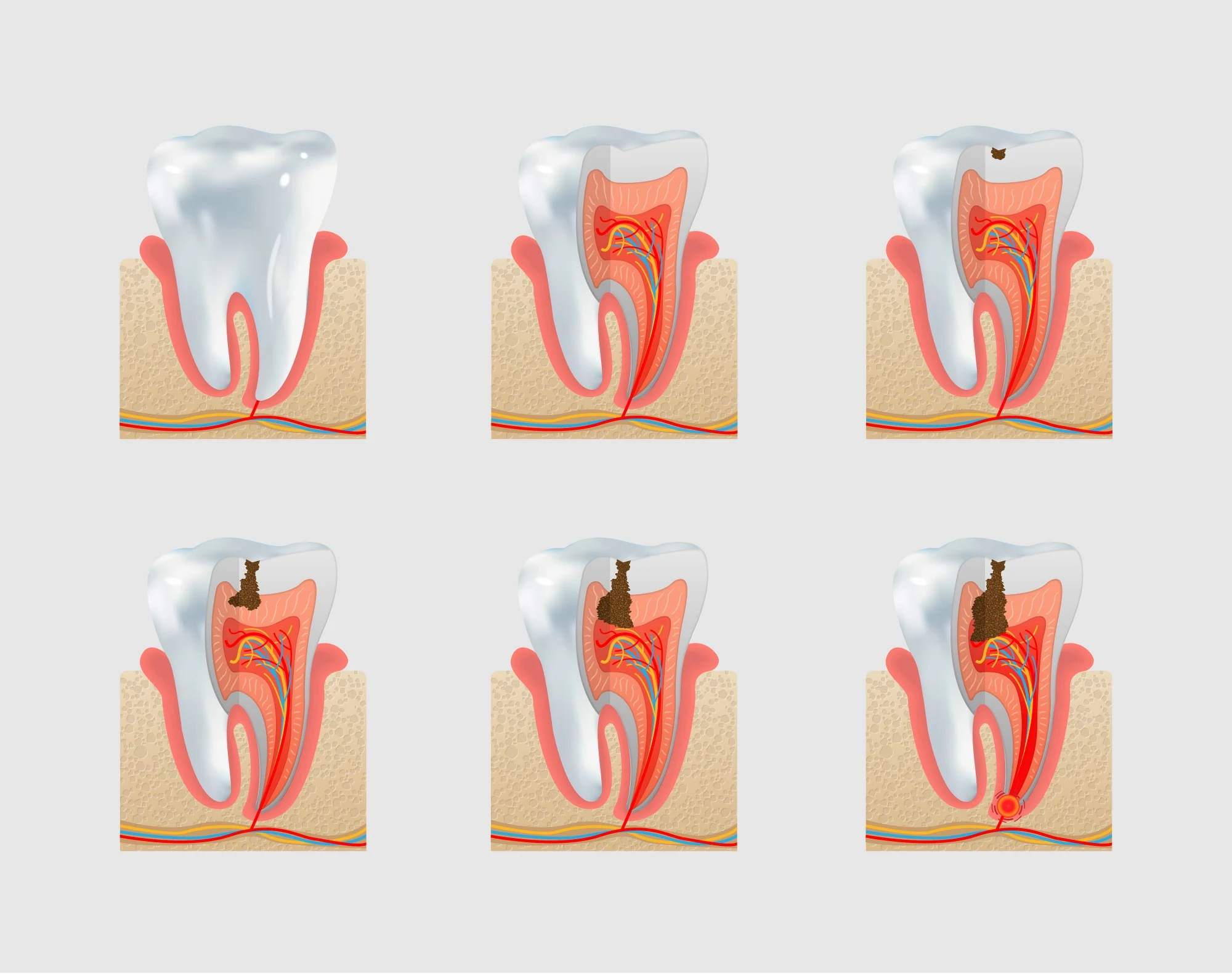
Cavities (Tooth Decay): Causes, Symptoms, and Treatments

This blog has been reviewed and approved by Francesca Dusio, an Italian registered Dentist with a strong international background.
Table of Contents
Key Takeaways
- Tooth decay and cavities are caused by bacteria in plaque that produce acids that eat away at the enamel on the outside of your teeth. If left untreated, the acids will reach the dentin and, eventually, the pulp of the tooth.
- Several factors can cause or contribute to cavities, including your diet, poor oral hygiene, dry mouth, and receding gums.
- Symptoms of cavities and tooth decay include tooth sensitivity or toothache, discoloration, visible holes or pits, bad breath, and a bad taste in your mouth.
- Cavity treatment options include fluoride treatments, fillings, crowns, root canals, or tooth extraction.
- You can prevent cavities and tooth decay by maintaining a good oral hygiene routine, using an electric toothbrush, using stannous fluoride toothpaste, visiting your dentist twice per year, limiting sugary and starchy foods and drinks, and drinking plenty of water.